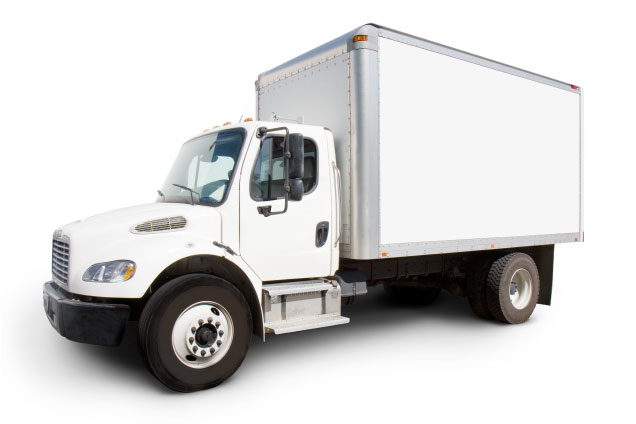Navigate the Intricacies of Storing a Freezer with Precision
Posted on 18/05/2025
Navigate the Intricacies of Storing a Freezer with Precision: Expert Tips and Tricks
Unlock the secrets to storing a freezer with precision with this comprehensive guide. From maximizing space to prolonging food freshness, discover effective methods and professional tips that allow you to organize your freezer like a pro. Whether you're a home chef, meal prepper, or want to reduce food waste, learn how to harness the full power of your freezer storage technique for optimal results!
Understanding the Art and Science of Freezer Storage
Freezer storage isn't merely about piling items inside until it's full. In fact, proper freezer organization can dramatically extend the life of your food, safeguard texture and flavor, and make your kitchen routine effortless.
Let's navigate the complexities of storing a freezer with precision and discover why a well-maintained freezer is a cornerstone of any efficient kitchen setup.
Why Is Proper Freezer Storage Essential?
- Prevents freezer burn: Correct storage minimizes air exposure, shielding food from icy dehydration.
- Reduces waste: Organizing your freezer ensures you use foods before expiry.
- Improves accessibility: A well-arranged freezer saves time finding ingredients, reducing meal prep chaos.
- Boosts appliance efficiency: Strategic placement of items can enhance air circulation and cooling performance.

Strategies for Storing Food in Your Freezer with Precision
Ensuring accurate and precise storage in your freezer is about more than order--it's about safety, quality, and convenience. Here's how to navigate the intricacies, maximize capacity, and protect your food investments.
1. Prep Food Correctly Before Freezing
- Cool foods rapidly: Don't freeze hot food--let it cool to room temperature first. This maintains freezer temperature and prevents ice buildup.
- Pre-portion servings: Cut meats, divide bulk purchases, and portion snacks before freezing to simplify future meals.
- Banish air: The less air, the longer the food keeps. Use tightly sealed, freezer-safe bags or containers.
2. Use the Right Packaging Materials
- Freezer zip bags: Squeeze out excess air before sealing and lay bags flat to expedite freezing and stacking.
- Plastic or glass containers: Ensure they're labeled as freezer-safe. Leave headspace for expansion.
- Aluminum foil and plastic wrap: Excellent for wrapping bread, baked goods, and meat cuts.
3. Master the Art of Labeling and Dating
An organized freezer is a labeled freezer. Use permanent markers or freezer labels to record the food name and the date it was frozen. Always apply the first-in, first-out principle, rotating older items forward to prevent forgotten food from languishing in the back.
4. Organize with Purpose: Freezer Zoning
The secret to efficient freezer use lies in sectioning your space for different food types. Here's an approach:
- Door shelves: Reserve for frequently accessed items like ice packs or frozen herbs due to temperature fluctuations.
- Upper shelves: Ideal for ready-to-eat meals, frozen fruits, or desserts--items used often.
- Middle and bottom shelves: Store proteins, bulk veggies, and less frequently used items here where temperature is most stable.
- Drawers or baskets: Group smaller items such as snacks, nuts, or smoothie ingredients.
5. Use Organizers, Bins, and Dividers
Invest in stackable bins, dividers, or baskets designed for freezer use. This tactic helps categorize ingredients, keeps smaller items accessible, and prevents everything from shifting during rummaging.
Maximizing Freezer Storage Capacity: Smart Techniques
If you want to store your freezer with precision and efficiency, implementing smart solutions is key. Let's explore the best actionable advice for optimal freezer logistics.
Flash Freezing for Delicate Foods
Certain items--like berries, sliced veggies, or baked goods--benefit from flash freezing. Spread them on a tray, freeze individually, then transfer to a bag or container. This ensures foods don't clump and makes portioning easy.
Stack Flat, Stack Smart
- Lay bags and thin containers flat while freezing to speed up solidification and allow for vertical stacking, saving space and aiding visibility.
- Once frozen solid, you can file bags upright or stack them tightly to maximize freezer capacity.
Leave Air Flow Room
- Avoid stuffing your freezer beyond capacity. Cold air needs room to circulate. A loaded--but not jam-packed--freezer retains cold efficiently.
- On the flip side, a nearly empty freezer wastes energy; fill open space with containers of water to stabilize temperature.
Break Bulk Down Before Freezing
Instead of freezing large packages, divide bulk items into meal-ready portions. This freezer management technique reduces time searching and minimizes need for future thawing and refreezing--a major source of texture loss and freezer burn.
Shelving, Defrosting, and Maintenance: Going Beyond Basic Storage
Mastering freezer storage precision encompasses more than just how you fill the shelves--it's also about caring for your appliance and its systems.
Keep Track of Inventory
- Post a whiteboard or digital inventory near your freezer. Log items used and added to eliminate mystery packages and keep food rotation simple.
Defrost Your Freezer Regularly
- Manual defrost freezers should be emptied and defrosted at least once or twice a year.
- Frost buildup reduces internal space and can trap odors or cause uneven cooling--defrosting is key to precision freezer storage.
Clean Spills Promptly
- Any leaks or spills can create odors or stains and promote bacterial growth once thawed out. Use a mild cleaner to wipe out spills instantly.
Food Safety: How to Store Items for Optimal Quality and Freshness
To truly master the intricacies of storing a freezer with precision, you must follow food safety best practices. Proper storage not only protects taste but also keeps your family healthy.
Set and Monitor the Correct Freezer Temperature
- Keep your freezer at or below 0?F (-18?C): This temperature halts bacteria and preserves food quality.
- Invest in a freezer thermometer to ensure consistent cold, especially with older appliances or frequent opening.
Freeze Foods Promptly
- Freeze food as soon as possible after shopping or preparation; avoid letting it linger at room temperature.
- Don't refreeze thawed food: This can degrade quality and increase risk of bacterial growth.
Package Foods Appropriately
- Double-wrap or store high moisture foods in airtight packaging to reduce risk of freezer burn.
- Suction out air with a vacuum sealer for the longest possible storage life.
Tips for Different Types of Freezers: Upright vs. Chest Freezers
Your freezer's design can influence your organizational approach. Let's unpack the nuances of precision freezer storage by freezer type.
Upright Freezers: Emphasize Accessibility
- Advantage: Multiple shelves and bins allow for vertical sorting. Group items in bins on each shelf or in-door racks.
- Tip: Use labeled baskets for categories--meats, veggies, prepped meals--and stack flat freezer bags upright for improved sightlines.
Chest Freezers: Leverage Space and Layering
- Advantage: More space, better for bulk storage, but less natural organization.
- Tip: Layer items by type using bins, cardboard boxes, or sliding organizers. Create "zones" for different food groups, and maintain a written inventory for easier tracking.
Common Freezer Storage Mistakes--and How to Avoid Them
Even the most organized kitchen pros can make freezer storage errors. Here's what to watch for when striving for precision in freezer organization:
- Storing hot food: Always cool before freezing to avoid temperature fluctuations and ice crystal formation.
- Neglecting to label: Without clear labels, food gets lost or wasted.
- Poor packaging: Thin or punctured bags lead to freezer burn and flavor loss.
- Overcrowding: Packing too tightly blocks airflow, making the freezer work harder and increasing ice buildup.
- Not rotating: Failing to move older food forward means waste down the line.

FAQs: Navigating Freezer Storage Like a Professional
-
How long can I store meat in the freezer?
Most meats keep for 3-12 months when wrapped properly, but always check USDA guidelines for specifics. -
Can I freeze dairy or eggs?
Many dairy products freeze well, but might change in texture. Eggs can be frozen out of the shell and lightly beaten. -
What foods don't freeze well?
High-water content produce (like lettuce, cucumbers) and some soft cheeses tend to suffer in texture, though they may still work in cooked dishes.
Conclusion: Redefine Freezer Storage with Precision and Care
To navigate the intricacies of storing a freezer with precision is to embrace a disciplined, thoughtful approach. From food preparation, packaging, and labeling, through to optimal placement and ongoing maintenance, every detail affects food quality and convenience. By using these expert-backed tips for precise freezer storage, you'll not only minimize waste and save time, but also turn your freezer into a true ally in your kitchen.
Explore new organizational systems, remain vigilant about inventory, and regularly review your freezer's contents. With dedication and a strategic mindset, your journey to flawless freezer storage will become second nature, simplifying daily life and preserving your food investment for months to come.





